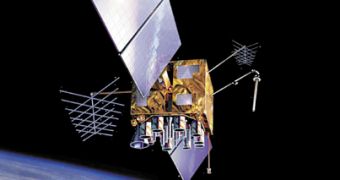Our readers are familiar with the details on the better-quality imagery that Google Earth and Google Maps will soon benefit from. The 50 cm ground resolution images will turn the two Google applications into more than just fun tools, as they will offer an extensive view on various regions on the globe. This will all be possible with help from GeoEye, a company that just launched its GeoEye-1 satellite into orbit this weekend.
Apparently, the satellite didn't encounter any major problems at launch. This means that the imagery will be ready in 45 to 60 days, the team anticipates. “Based upon the data we saw, the satellite is performing properly and ready to begin the next phase towards meeting its mission requirements.” said Bill Schuster, GeoEye chief operating officer.
As far as it has been made public, Google will be the only client to use GeoEye's newly launched satellite. To seal the agreement, the United Launch Alliance Delta II rocket, used for the propelling of the satellite, donned Google trappings.
Matthew O'Connell, GeoEye chief executive officer, explained the importance of the new technology employed by GeoEye for the Google applications. “Later this fall, we will start providing high-resolution color imagery of the Earth from our newest satellite to customers around the globe. The imagery from GeoEye-1 adds to the quantity and quality of that currently provided by our IKONOS satellite, and together this magnificent constellation will enable us to meet world-wide customer demand.”
Because US regulations stipulate no details at a better resolution than half a meter should be provided, the images captured by the satellite will stop at this threshold. The black-and-white images will be more accurate than the polychrome ones, which will probably help put to rest, at least partially, all those invasion of privacy related concerns. However, since there’s always a downside to everything, although Google Earth and Google Maps will offer images of a unique fidelity, criticism will definitely appear once again.

 14 DAY TRIAL //
14 DAY TRIAL //